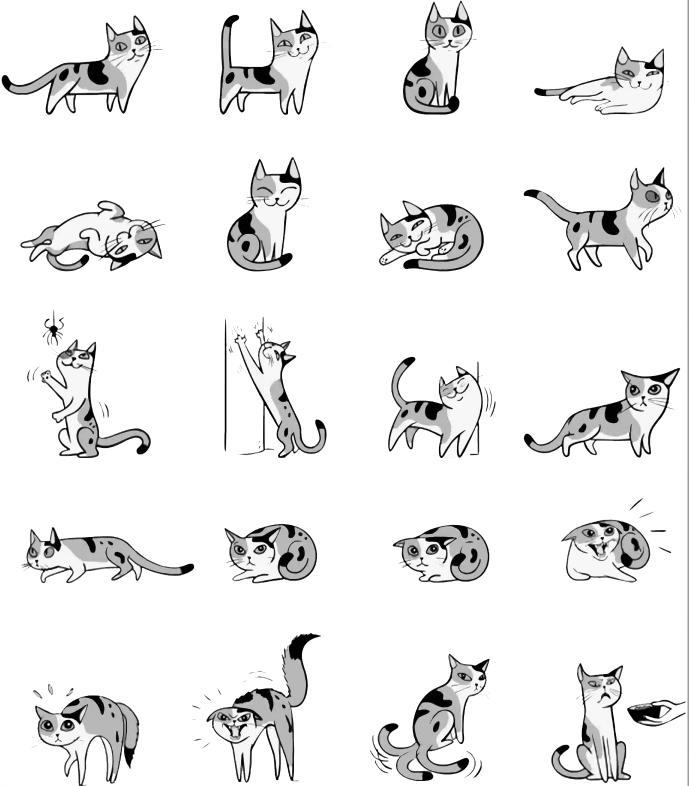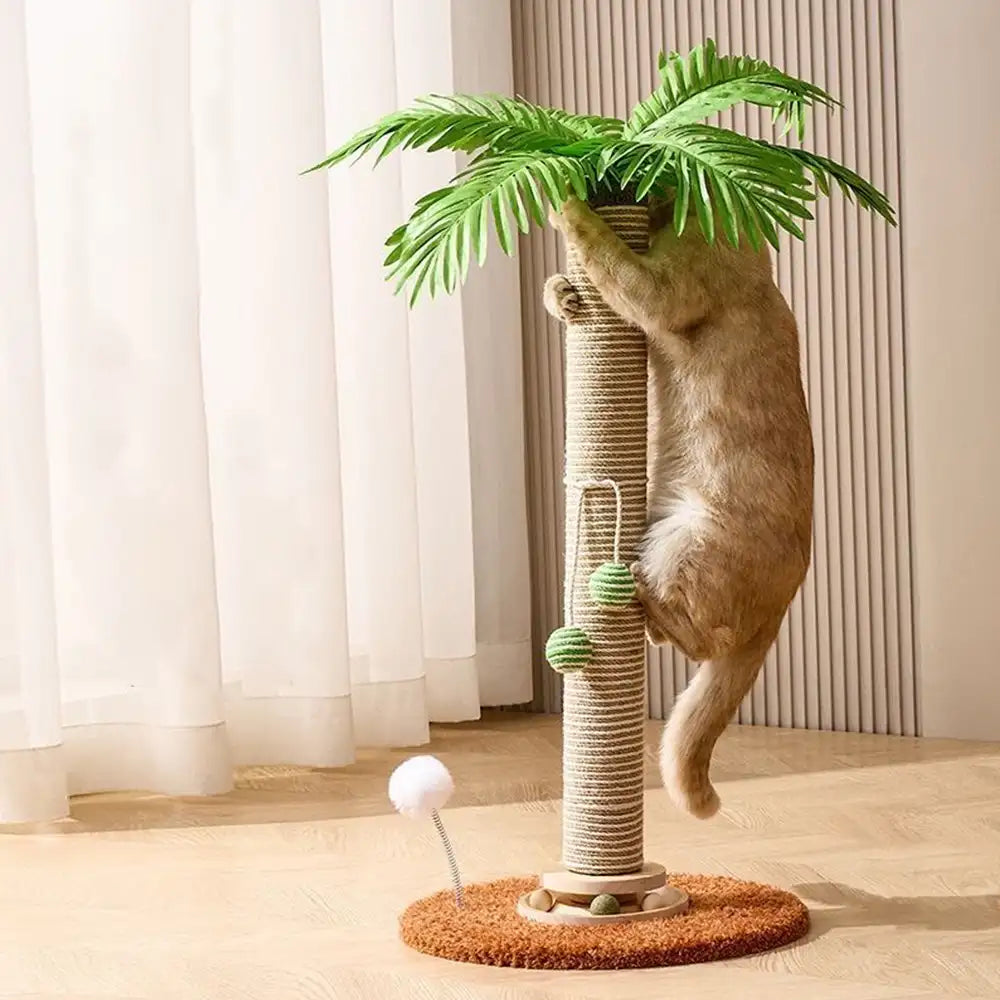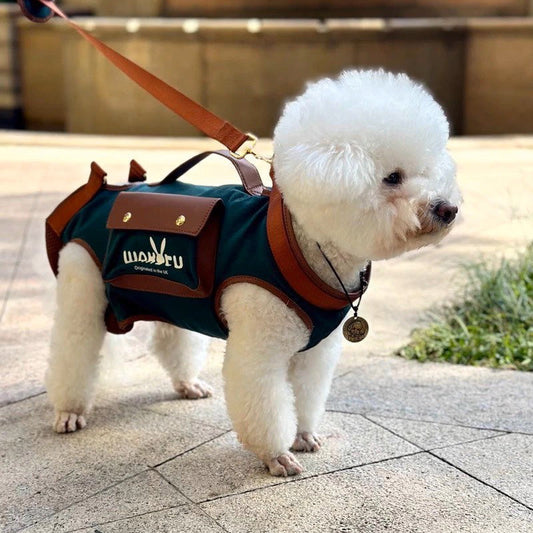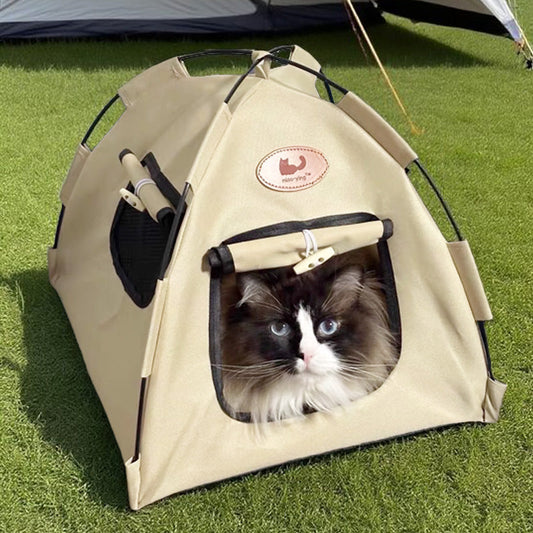
Guide des nouveaux parents de chats | Comprendre les émotions de votre chat grâce à son langage corporel
Partager
Chers nouveaux parents de chats, bienvenue dans le monde merveilleux (et parfois déroutant) de la compagnie féline !
Si vous vous êtes déjà demandé « Qu'est-ce que mon chat essaie de me dire ? », vous n'êtes pas seul. Chaque mois, de nouveaux propriétaires de chats se demandent s'ils comprennent mal le comportement et les émotions de leur compagnon. Après tout, nous savons tous que les chats tombent malades à cause d'une mauvaise éducation, que ce soit psychologiquement ou physiquement. Nous allons maintenant aborder certains problèmes rencontrés par les nouveaux propriétaires de chats et les solutions pour les résoudre. Nous commençons par le plus simple : laissez nos chats vivre une vie saine et heureuse sous la protection de parents novices.
Pourquoi il est important de comprendre le langage corporel des chats
Avant de plonger dans les détails, expliquons pourquoi cela est si crucial :
1. Empêche les malentendus qui conduisent à des morsures ou des griffures
2. Renforce votre lien grâce à une meilleure communication
3. Détection précoce des maladies : les changements de comportement signalent souvent des problèmes de santé
4. Réduit le stress pour vous et votre chat
Maintenant, décodons les états émotionnels les plus courants de votre chat à travers son langage corporel.
Les 10 émotions essentielles du chat et leurs signes révélateurs
1. La salutation amicale : « Bonjour, humain ! »
Ce que vous verrez :
- Queue tenue haute avec une légère courbe à l'extrémité
- Oreilles en avant et détendues
- Peut frotter contre vos jambes

Ce que cela signifie :
C'est la version féline du salut. Lorsque les chats se saluent ainsi, ils échangent des informations olfactives grâce aux glandes situées dans leurs joues.
Comment répondre :
- Tendez doucement votre doigt pour qu'ils le reniflent
- Proposer des clignements lents (plus d'informations à ce sujet ensuite)
- Parlez d'une voix douce et aiguë
*Conseil de pro :*
Remarquez si la queue tremble légèrement pendant le salut - cela signifie une excitation supplémentaire !
2. Le clignement lent : « Je t'aime »
Ce que vous verrez :
- Yeux mi-clos
- Clignements lents et délibérés
- Muscles faciaux détendus
Ce que cela signifie :
Des chercheurs de l'Université du Sussex ont confirmé qu'il s'agit d'une façon pour les chats de montrer leur affection. C'est l'équivalent d'un sourire humain.
Comment répondre :
- Rétablir les clignotements lents
- Évitez le regard direct (que les chats trouvent menaçant)
- Parlez doucement en clignant des yeux
3. Marquage olfactif : « Ceci est à moi »
Ce que vous verrez :
- Frotter la tête/le corps contre des objets (ou contre vous !)
- Légères rayures sur les surfaces
- Pulvérisation occasionnelle (chez les chats non stérilisés)

Ce que cela signifie :
Votre chat dépose des phéromones à partir de ses glandes odorantes pour revendiquer son territoire. Ce n'est pas destructeur ; c'est sa façon de créer un environnement familier et sécurisant.
Comment répondre :
- Fournir des griffoirs appropriés
- Ne jamais punir le comportement de marquage
- Envisagez des phéromones félines synthétiques pour les chats anxieux
4. Exposition du ventre : « Je te fais confiance... Mais... »
Ce que vous verrez :
- Se retourner sur le dos
- Ventre exposé
- Peut-être ronronner

Ce que cela signifie :
Cela témoigne d'une confiance absolue, mais contrairement au comportement canin, c'est rarement une invitation aux caresses sur le ventre. La plupart des chats préfèrent se faire gratter la tête.
Comment répondre :
- Admirez mais ne touchez pas immédiatement
- Si vous caressez, tenez-vous-en à la tête/au menton
- Soyez attentif aux signes subtils de surstimulation
5. Mode Chasse : « Il faut. Attraper. Ça. »
Ce que vous verrez :
- Position accroupie basse
- Queue qui remue à l'extrémité
- Pupilles dilatées
- « Bavarder » avec les oiseaux

Ce que cela signifie :
Même les chats d'intérieur bien nourris conservent ce comportement instinctif. Il leur procure une stimulation mentale et de l'exercice.
Comment répondre :
- Offrir des séances de jeu interactives quotidiennes
- Utilisez des jouets à baguette pour satisfaire vos envies de chasse
- Ne punissez jamais ce comportement naturel
*Saviez-vous?*
Le chat domestique moyen passe 6 à 8 heures par jour à des activités liées à la chasse !
6. Le film agacé : « Reculez »
Ce que vous verrez :
- La queue s'agite d'un côté à l'autre
- Oreilles tournées sur le côté
- Posture corporelle raide

Ce que cela signifie :
Votre chat atteint sa limite de tolérance. Si vous l'ignorez, cela peut souvent entraîner des signes plus agressifs.
Comment répondre :
- Donnez-leur de l'espace immédiatement
- Évitez le contact visuel direct
- Recherchez des signes plus précoces et plus subtils la prochaine fois
7. Pose d'anxiété : « J'ai peur »
Ce que vous verrez :
- Accroupi au ras du sol
- Queue bien repliée
- Oreilles aplaties sur le côté

Ce que cela signifie :
Votre chat se sent menacé et cherche à paraître plus petit. Les déclencheurs courants incluent les bruits forts ou les personnes inconnues.
Comment répondre :
- Prévoir des cachettes (parterres couverts, boxes)
- Ne forcez pas l'interaction
- Utilisez des diffuseurs de phéromones apaisantes
8. Mode Curiosité : « Qu'est-ce que c'est ? Dis-m'en plus ! »
Ce que vous verrez :
-Oreilles pointues vers l'avant comme des antennes paraboliques
- Moustaches déployées et légèrement vers l'avant
-Queue tenue horizontalement avec une légère courbe à l'extrémité
-Tapotements lents et délibérés de la patte sur les objets d'intérêt

Ce que cela signifie :
Votre chat est entré en mode détective ! Il ne s'agit pas d'un simple intérêt : il mène des recherches scientifiques approfondies sur ce nouveau sac de courses, votre chargeur de téléphone ou ce point mystérieux sur le mur.
Comment nourrir leur curiosité en toute sécurité :
Créer des « postes d'enquête » - Placer des cartons ou des sacs en papier en rotation
Présentez-leur lentement de nouveaux objets - Laissez-les d'abord renifler les nouveaux objets à distance
Protégez-vous des tentations dangereuses - Utilisez des protège-cordons sur les fils
Jouez à 20 questions - Lorsqu'ils se concentrent sur quelque chose, reconnaissez-le verbalement (« Oui, c'est ma tasse à café ! »)
Conseil de pro : tenez un « journal de curiosité » en notant les objets qui fascinent le plus votre chat – vous découvrirez ses intérêts uniques !
9. Posture défensive : « Je me battrai s'il le faut »
Ce que vous verrez :
- Dos cambré
- Fourrure gonflée
- Sifflement ou grognement

Ce que cela signifie :
Votre chat se sent acculé et cherche à paraître plus grand. Il s'agit d'une réaction de peur grave.
Comment répondre :
- Reculez lentement
- Ne punissez jamais ce comportement
- Identifier et supprimer la menace si possible
10. L'arc de jeu : « Amusons-nous ! »
Ce que vous verrez :
- Pattes avant tendues vers l'avant
- L'arrière-train en l'air
- Mouvements de queue excités
- Apportez un jouet

Ce que cela signifie :
C'est une invitation à jouer ! Une belle occasion de créer des liens.
Comment répondre :
- Interagissez avec des jouets interactifs
- Gardez les séances courtes (5 à 10 minutes)
- Laissez-les toujours « attraper » le jouet parfois
Créer une maison adaptée aux chats
Maintenant que vous comprenez leur langage, voici comment aménager votre maison pour une meilleure communication :
Articles essentiels
- Plusieurs points de repos surélevés
- Des griffoirs dans les zones clés
- Des cachettes tranquilles
- Mangeoires à puzzle interactives
Conseils de routine quotidienne
1. Matinée : Séance de jeu suivie du petit-déjeuner
2. Après-midi : Moment calme (les chats dorment 12 à 16 heures par jour)
3. Soirée : Jeu interactif avant le dîner
Erreurs courantes commises par les nouveaux parents de chats
1. Caresses excessives - Soyez attentif aux signes subtils d'irritation
2. Punir les comportements naturels - Rediriger plutôt
3. Ignorer les signaux de stress - Conduit à des problèmes de comportement
4. Ne pas fournir d'espace vertical - Les chats se sentent plus en sécurité en hauteur
Vos prochaines étapes en tant que nouveau parent de chat
1. Observez - Passez 10 minutes par jour à observer les comportements naturels de votre chat
2. Journal - Notez les schémas d'humeur et de comportement
3. Expérimentez - Essayez différentes interactions et notez les réponses
4. Soyez patient : établir la confiance prend du temps
Après avoir appris ces langages corporels de base, chers parents de chats novices, allez voir ce que disent vos chats




